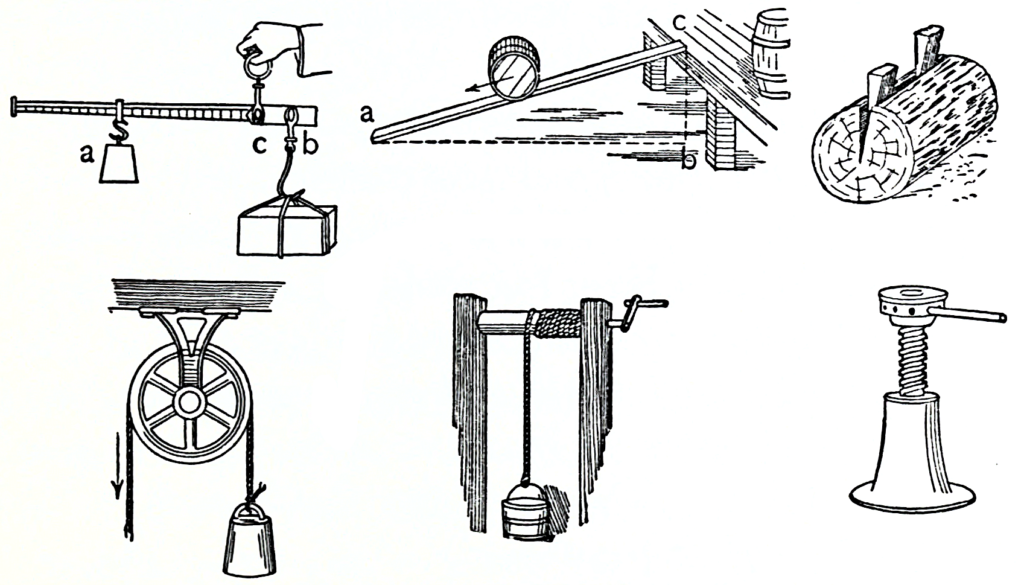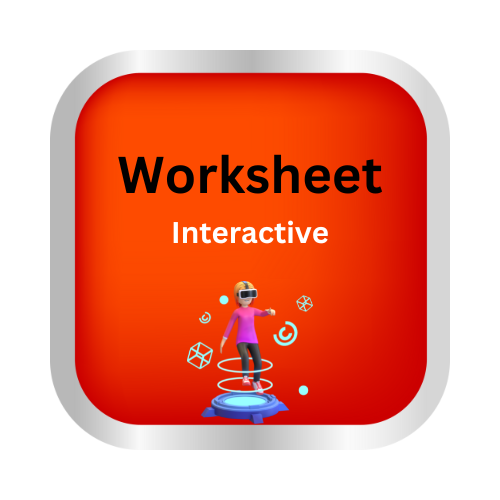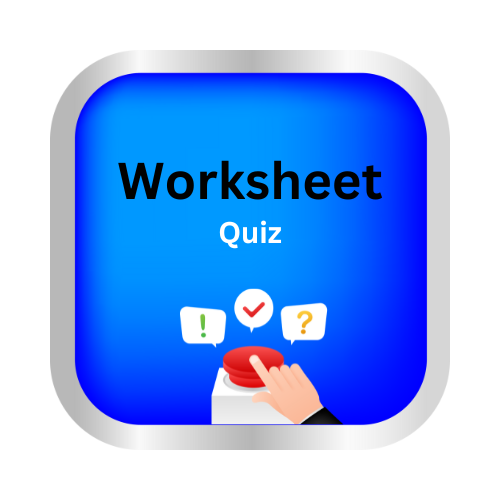Simple Machines

Key Notes:
What are Simple Machines?
– Simple machines are basic mechanical devices that make work easier by changing the direction or amount of force needed to perform a task.
Types of Simple Machines:
1. Lever:
– A rigid bar that pivots on a point called a fulcrum.
– Examples: seesaw, crowbar, scissors.
2. Wheel and Axle:
– Consists of a wheel that rotates around a central axle.
– Examples: bicycle, car wheels.
3. Pulley:
– A wheel with a groove that a rope or cable can run through.
– Used to lift or move heavy objects.
– Examples: flagpole, well pulley.
4. Inclined Plane:
– A flat surface that is tilted at an angle.
– Reduces the effort required to move objects vertically.
– Examples: ramps, stairs.
5. Wedge:
– Two inclined planes joined back to back.
– Used to split, cut, or hold things together.
– Examples: knife, axe.
6. Screw:
– An inclined plane wrapped around a central axis.
– Used to fasten things together.
– Examples: screws, bolts.
Key Concepts:
– Simple machines help us do work with less effort or force.
– They allow us to change the direction or distance over which we apply force.
– The mechanical advantage of a simple machine is a measure of how much it multiplies force or changes the direction of force.
– The formula for mechanical advantage is Mechanical Advantage (MA) = Output Force / Input Force.
– Simple machines follow the principle of “Work Input = Work Output” but can make work easier by spreading it out over a longer distance.
Real-Life Applications:
– Levers help you lift heavy objects.
– Wheel and axle systems are found in vehicles.
– Pulleys are used in construction to lift heavy loads.
– Inclined planes make it easier to move furniture.
– Wedges are used in cutting tools.
– Screws are used to hold things together.
Importance:
– Simple machines are the building blocks of more complex machines.
– Understanding them helps us design and use tools more effectively.
Let’s practice!

